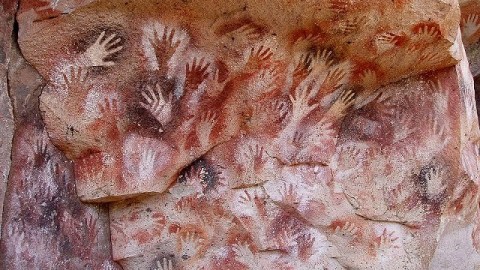Can We Understand Art Outside of Culture?

One of the biggest debates inside the world of art criticism and scholarship is whether art, especially world art, can be understood without the idea of culture. In the debut issue of the scholarly journal World Art, John Onianssurveys the landscape of the divide between those who still hold that culture remains key in understanding art and those who base their perception of art on human nature and the natural environment in which the art was produced. As the world gets smaller and, more importantly, as we more frequently crash into one another, the answer to the question of culture versus nature might allow us not only to understand the art of others, but also to understand the people who make them.
Onians, Professor Emeritus of World Art at the University of East Anglia, may be the best qualified person on earth to assess the situation. Editor of The Art Atlas (which I reviewed here in 2008) and author of Neuroarthistory, Onians personally knows the evolution of an art historian from a culture-based perspective to one based on human nature and/or the natural environment. Onians’ personal practice may prejudice him against seeing art purely through culture, but he makes a compelling argument against what can be seen as the “old fashioned” way.
Onians gives the example of Harvard cultural historian Ivan Gaskell as a template for the journey so many scholars take when moving from a specified discipline to a global view. “So powerful has the impact of his involvement [in world art] been,” Onians writes of Gaskell, “that he now presents himself in the following way on his personal website, http://www.ivangaskell.com/: ‘While acknowledging the inescapability of my European and American identity, I promote cultural decentering (no more centres and peripheries). I advocate attention to the visual creativity of a wide range of societies. Recently I have written and lectured on topics from Polynesia, Congo and Native American nations in the USA.’” “Where once the safe option for a scholar was to be a narrow specialist, and stepping outside that was risky,” Onians concludes, “now it is the narrow specialist who takes the greatest risk, knowing neither the full range of possible parallels to what he is studying nor the full range of possible explanations for them.”
In a way, Onians’ presentation of human nature as the “new” answer sounds like the old idea of essentialism. There’s always the temptation to reduce everything to some soul-like essence. That reduction could erase all differences that make us unique. What Onians and others envision instead is an essentialism that still recognizes differences, but places a priority on the similarities. For example, what are we to make of the Cueva de las Manos, the ancient “Cave of the Hands” in Argentina (shown above). Someone, perhaps a young boy, sprayed paint over his hand over and over nine thousand years ago. We can guess at the culture of that place and time and what they valued, or we can identify with the same human impulse to leave a lasting mark. Born into Western culture, I’ve always seen the world primarily through that prism. But as I grow older and branch out further into the world of art, I realize that Western culture doesn’t hold all the answers. No culture does. Even if we ever find evidence of what that boy thought nine millennia ago in Argentina, it can never equal the human connection that we can make by just looking outside of ourselves and then looking inside of ourselves.





